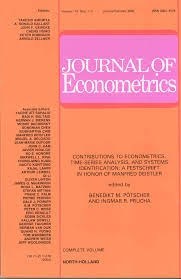
Koopman, S., Lucas, A. and Schwaab, B. (2011). Modeling frailty correlated defaults using many macroeconomic covariates Journal of Econometrics, 162(2):312--325.
-
Affiliated authors
-
Publication year2011
-
JournalJournal of Econometrics
We propose a novel time series panel data framework for estimating and forecasting time-varying corporate default rates subject to observed and unobserved risk factors. In an empirical application for a U.S. dataset, we find a large and significant role for a dynamic frailty component even after controlling for more than 80% of the variation in more than 100 macro-financial covariates and other standard risk factors. We emphasize the need for a latent component to prevent a downward bias in estimated default rate volatility and in estimated probabilities of extreme default losses on portfolios of U.S. debt. The latent factor does not substitute for a single omitted macroeconomic variable. We argue that it captures different omitted effects at different times. We also provide empirical evidence that default and business cycle conditions partly depend on different processes. In an out-of-sample forecasting study for point-in-time default probabilities, we obtain mean absolute error reductions of more than forty percent when compared to models with observed risk factors only. The forecasts are relatively more accurate when default conditions diverge from aggregate macroeconomic conditions. {\textcopyright} 2011 Elsevier B.V. All rights reserved.